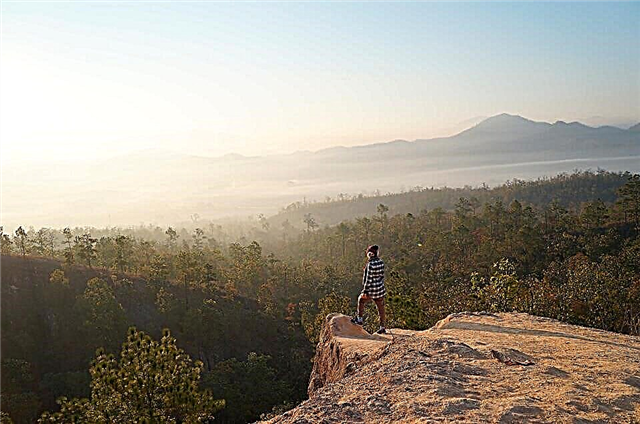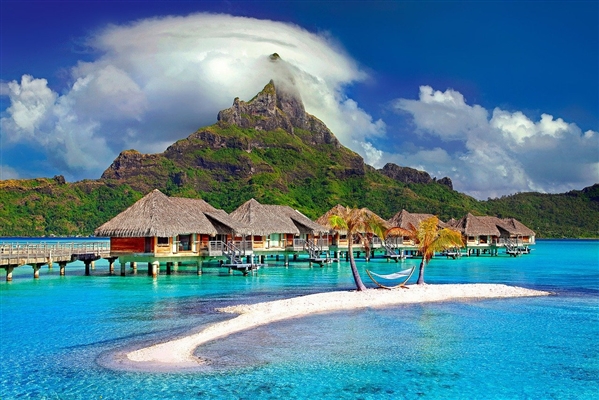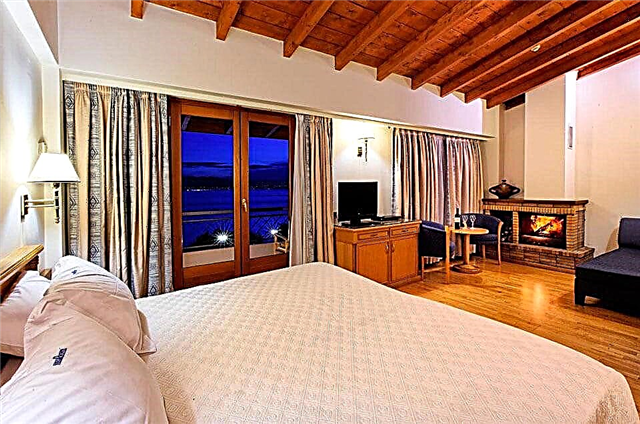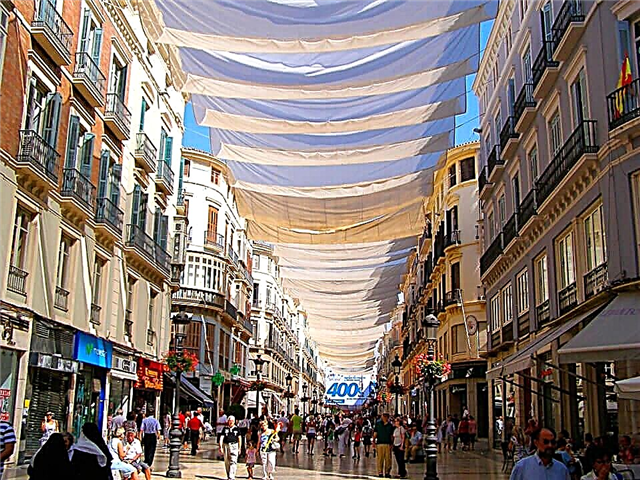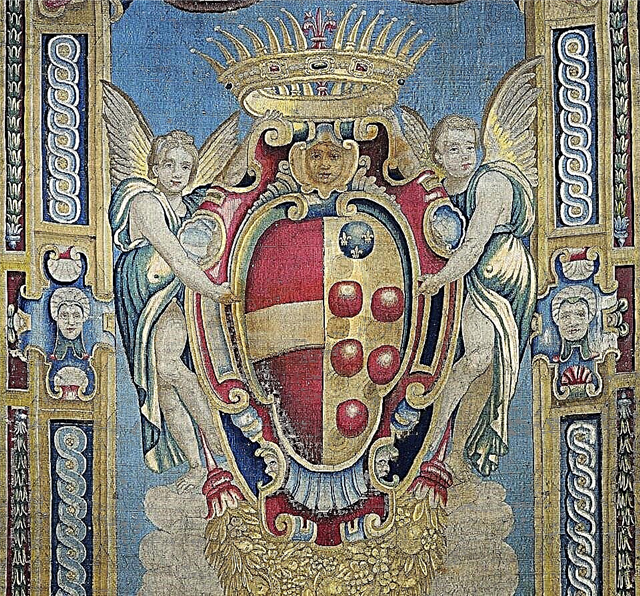The historic center of Florence, the main streets of the ancient city are a whole scattering of luxurious Renaissance buildings of historical and cultural value. Among them is the famous Palazzo Medici Riccardi in Florence. Its history is inextricably linked with three legendary Italian dynasties: Medici, Riccardi and Sforza. Today the palace is besieged by tourists: not only connoisseurs of history and architecture, but also fans of the computer game "Assassin's Creed II" and the cult television series "Hannibal". In a computer game, the palazzo appears as one of the locations for an important mission, while for the series, the interiors of the Capponi Palace were filmed in the palazzo, where the main character Hannibal Lecter commits his next murder.
After the actors Mads Mikkelsen and Fortunato Serlino, who played key roles on the stage, as well as the film crew, visited the palazzo, fans often visited it as a new "place of power". By the way, the palazzo is also described in the novel by Alexandre Dumas "Night in Florence", but only fans of the writer remember this. But the current state and recent history pales before that grandiose history that goes back into the depths of the centuries, when the magnificent palace was just beginning to be created, because the most influential people of the Florentine Renaissance, both bankers and politicians, as well as architects and sculptors, had a hand in it.
Construction history

The construction of the palazzo is preceded by a curious story. Having decided to build another family estate in the center of Florence, first of all, Duke Cosimo Medici the Elder proposed to develop a plan for the palace of Filippo Brunelleschi, which he had then in good standing. Not stingy, the famous architect soon brought the customer a model of a luxurious palace: with patterned reliefs, stucco and statues
But Cosimo unexpectedly refused: he wanted the building to symbolize not luxury and wealth, but strength and reliability. Brunelleschi was greatly offended: the evidence of that time says that the architect broke the made model, and the exterior he invented was never brought to life.
After this happiness was tried by another architect, also held in high esteem by the Medici family, - Michelozzo di Bartolomeo. Without making the mistakes of his predecessor, he offered the Duke of Tuscany an image of a palace that was modest and at the same time majestic, and Cosimo immediately accepted it with pleasure. After that, the construction of the palace began immediately.
The first stone of the future building was laid in 1444, and the construction itself lasted almost 20 years - until 1460. All this time and many years after, other Florentine architects, who built houses for bankers and politicians, carefully took care not to "overtake" the Medici family palace in size and grandeur, which would be bad form and disrespect for a wealthy family. The building houses not only the family chambers, but also the headquarters of the Medici Bank. Representatives of the legendary family and their descendants lived and worked here for almost two centuries.
Then the palace passed to another influential Florentine family - the Riccardi, who by that time had already organized their library here, famous throughout Italy. In addition, it is known that Galeazzo Maria Sforza, at that time a fifteen-year-old boy, and then one of the most influential dukes of Milan, did not stay for long in Palazzo Medici Riccardi. Today the palace is open to visitors. It not only has amazing exteriors and interiors, but also has preserved many luxury items and works of art.
Courtyard

Despite the oppressive power and strict forms of the facade, Palazzo Medici-Riccardi hides something graceful and surprisingly harmonious inside itself, namely, a small cozy courtyard. It is called the courtyard of Michelozzo - after the name of the architect of the building - or the courtyard with columns, because the columns surround it on all four sides.
The first level is just the same covered arched gallery, the second level is the windows, the third is the gallery again. All elements of the courtyard are decorated with reliefs and stucco moldings.
There are also many works of art, among which you can see:
- two "David" by Donatello and Verrocchio
- Medici coats of arms
- Roman sarcophagi, reliefs, busts and other interesting artistic compositions from the private collection of the Medici family
- sculpture "Orpheus pacifying Cerberus"

The paths here are lined with multi-colored shiny mosaics, all the bushes are neatly and figuratively trimmed, and the citrus trees exude an amazing sweet and sour tart aroma. It is cool here in hot weather, as you can hide under a canopy and in the shade of massive columns, and in windy weather it is cozy, since the walls do not allow a single draft to pass through. Representatives of the Medici family loved to spend time here. Later, the tradition of making patios became mandatory for the construction of similar buildings throughout Italy.
Architecture

The facade of the building is simple and uncomplicated, as demanded by Cosimo Medici the Elder. It is these qualities that give it grandeur and even a certain monumentality. The palazzo is divided into three floors, and each floor is different in its design. The first floor is paved with rustication. Rust is a rough and rough stone, in those days only public buildings were faced in this way, and the Medici Riccardi palazzo became the first private one.
With such a facing, Bartolomeo wanted to show how great the influence of the Medici is. The second floor is already more graceful: it is lined with smooth white rectangular slabs, and high lancet windows make it seem to aspire upward. The windows, by the way, were designed by Michelangelo himself. The third floor is tiled with red tiles and also features a loggia. Unfortunately, today the loggia is walled up and closed to tourists.
Medici coat of arms

The Medici coat of arms is five red balls and one blue with three golden lilies, all on a yellow background. In Palazzo Medici Riccardi, the coat of arms is located on the second floor. Scientists are still arguing about the exact meaning of the coat of arms of the famous surname. There are a huge number of versions. One says that the yellow shield with red "bloody" balls is the image of the weapon of Averardo Medici, with which he defeated the giant.
The other is that balls are pills, because the Medici were a family of pharmacists and pharmacists, and it was in the production and sale of drugs that they made a fortune. The third is that balls are coins, because the Medici were one of the most influential Florentine banking families, or gold bars (in those days they were just round in shape). Where is the truth here - it is already impossible to say now. But, it is likely that there is some truth and common sense in each version.
Interior decoration

Most of the premises on the first floor have been preserved as they were originally. Among luxury items and works of art, you can see:
- "Madonna and Child" by Filippo Lippi
- marble walls and floors
- stucco and reliefs
- expensive furniture with mosaic inlay
But on the second and third floors, it is no longer worth looking for personal belongings of the Medici era: the interiors here have been rebuilt more than once in a modern way, and even the 20th century made its own changes in the design of the interior of the famous building.

Gallery of mirrors
The Gallery of Mirrors, also known as the Giordano Gallery, is famous for its frescoes by Luca Giordano. The frescoes were painted in the 17th century by order of the Riccardi family. They depict both allegorical motives and specific images of members of the Medici family.
Chapel of the Magi
The small family chapel, which belonged to the Medici, looks like a magic box from the inside, it is so bright and colorfully painted with frescoes. But here's what's interesting: the frescoes are not separate works, but a kind of single composition called "The Procession of the Magi to Bethlehem." The author of the image is Benozzo Gozzoli, and in the faces depicted, if you look closely, the features of the Medici family are clearly visible. The altar of the chapel is also very beautiful. Above it is a copy of Filippo Lippi's Nativity, installed in the 20th century.
Room of the Four Seasons
From the chapel, a sumptuous staircase leads to the Four Seasons Room, or the Four Seasons Hall. It is called so because there are Florentine tapestries depicting the four seasons.
Opening hours and ticket prices
The opening hours of Palazzo Medici-Riccardi are as follows:
- Thu-Tue 09.00.-19.00
- wed day off
Be careful: the ticket office closes two hours earlier than the palazzo itself. In addition, on holidays, the palace closes its doors to visitors at 18.00. There are several types of entrance tickets. General, suitable for most of the visitors, will cost 7 euros. A ticket for 4 euros can be purchased by small children, schoolchildren and students, as well as military personnel. For people with disabilities, free admission is assumed, and the accompanying person is also not required to buy a paid ticket.
Where is it located and how to get there
The address of Palazzo Medici-Riccardi is: Via Cavour, 3. Translated into Russian, this is Clavura Street. However, it will hardly be difficult for a tourist to find the famous palace: it is located in the historical center of the city and is surrounded by many other attractions, and all walking routes and bus excursions will certainly pass through it.
You can get there both on foot and by public transport by buses No. 1, No. 6, No. 11 and No. 17. You can also call a city taxi. If you rented a car in Florence or got to Europe on your own, you can park it in the central market located nearby, or at the train station, which is also within walking distance of the palazzo. But pay attention: parking is paid!

